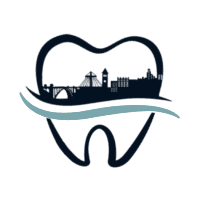When dentists speak about the osteoclastic bone, they’re most often referring to the process of the osteoclasts, or bone cells, either forming or breaking down the bone tissues. Reabsorption occurs when those osteoclasts release minerals by breaking down the tissues and then transferring those minerals into the blood. This reabsorption process is considered harmful to one’s oral health, especially in cases where severe tooth decay and periodontal disease are involved. Orthodontists who attempt to prevent the process of osteoclastic reabsorption often need to encourage better bone formation and growth through the use of braces.
In some cases, this means that before orthodontic treatment is performed, the jawline needs to be reconstructed through the use of bone grafts which provide donor bone material to allow osteoclasts to absorb and reform the material into the jaw structure. This process is also used for the process of implant restorations due to the support needed for the implant posts. But for orthodontists, this means that dental appliances such as braces and retainers need to help provide movement to redirect those bodily changes and help restructure the mouth back to better health.
How Does The Orthodontic Process Work With Braces?
Braces provide gradual tooth and palette movement over time, causing significant changes to the bone structure within the mouth. Because our bones are always growing and changing over time, any structural changes to the mouth will induce the process of osseointegration or the fusing process of bone material. This continuous activity among the osteoclasts helps many restorative treatments such as implants have a high success rate, especially for those who have recently suffered from conditions such as severe tooth decay.
In any dental process where braces are needed, there are primary parts to braces that allow the process of osseointegration to occur with the new structures of the bones and teeth. These include:
- Brackets: Brackets are the mounting points for the teeth that are usually composed of ceramic or metal. These support points uphold the archwires and o-rings and assist with the tooth movement process.
- Archwires: The archwires are designed to apply precise pressure to the teeth to help adjust them into the proper position. The wires are the primary and intricate part of braces that work to induce the osseointegration process for gradual tooth movement.
- O-Rings: Also called ‘ligatures,’ o-rings are elastic bands that connect the archwire to the bracket. These o-rings can be regularly replaced at each appointment and can also come in many different colors for those seeking to brighten their smile. These o-rings help support the brackets and wires for continuous movement.
Speak with Your Dentist Today For More Information
Together, all of these components work to gradually make changes to your mouth throughout the treatment. The bones are consistently remodeled due to the sustained, gradual pressure placed along the tooth line. Over time, changes can continuously be made to ensure that bone osseointegration is successful. If you find yourself curious about bone healing and tooth treatment methods, the best resource you can speak to is your dentist for more information.



